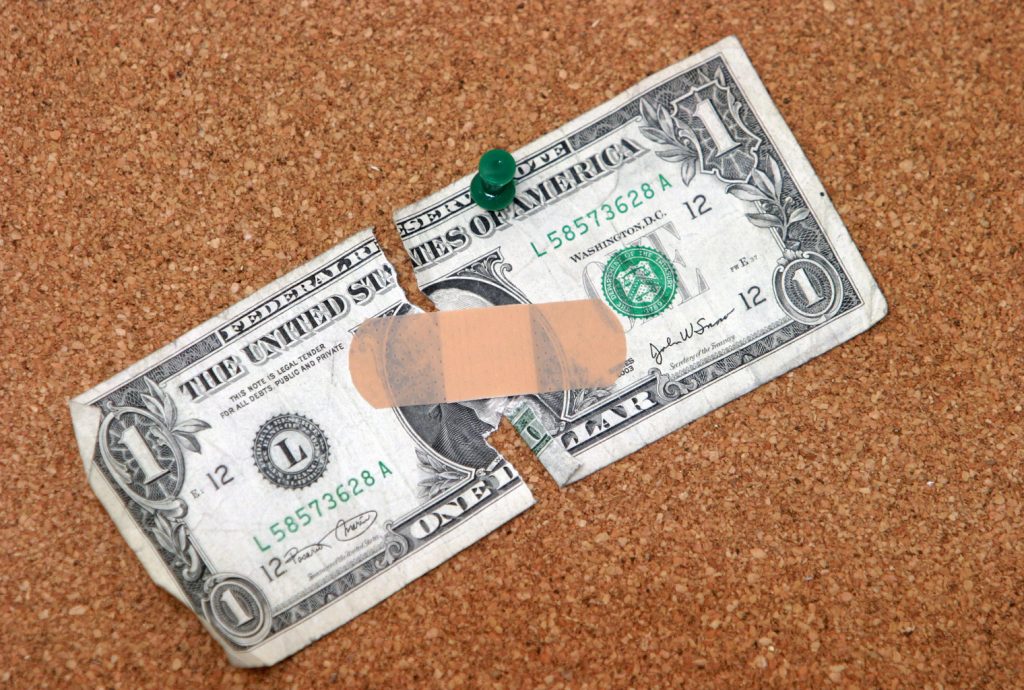Latest news about Bitcoin and all cryptocurrencies. Your daily crypto news habit.

Stablecoins provide much sought after stability in the volatile crypto markets. They are sometimes even said to affect the price of bitcoin in drastic fashion. Tether (USDT) in particular continues to be widely scrutinized for this, with recent lawsuits about conflicts of interest and price manipulation being hotly contested. More important to dive into, however, is the reality that some stablecoins are harmful to bitcoin adoption. A kind of fractional reserve banking 2.0.
Also Read: Tron-Based Tether Has Ballooned to Over 900 Million Tokens, Almost 22% of Total Supply
Backed by the State
Stablecoins can in one sense be divided into two broad classes: those that depend on fiat (government-issued money), and those that leverage other, non-fiat-based assets or commodities for their value. USDT, for example, is a centrally managed asset that depends entirely on the fiat monetary system for its value stability.
Where Tether began with claims of being backed “1-to-1” by and redeemable for U.S. dollars, that policy has since been changed. Tether silently amended this description to include “traditional currency and cash equivalents and … other assets and receivables from loans made by Tether to third parties.” Understandably this change caused quite an uproar in the crypto community from individuals suspicious of the opaque verbiage.
It’s argued that as long as the asset is backed, it cannot be compared to fractional reserve banking, the process government-regulated banks use to issue more money than is actually on hand, in order to provide liquidity and grease the wheels of an economy. In September last year, even this idea was called into question, however, when Tether co-founder William Quigley stated:
Whether or not Tether was backed by a dollar or not, actually wouldn’t matter if everybody agreed to take Tether and to value it at a dollar themselves.
With the ongoing mass-printing of new tethers, vaguely worded policies, multiple lawsuits and lack of thorough, open audits, the statement seems to imply that tether might as well be backed by faith as much as it is by dollars. As tether is the most widely used stablecoin according to reports, and its market cap has grown from around $10 million to over $4 billion in the space of three years, there appears to be no shortage of believers.
 https://coinmarketcap.com/currencies/tether/
https://coinmarketcap.com/currencies/tether/
Ironically, this faith-based way of viewing a currency is similar to the system U.S. dollars themselves are built on, with one critical difference: tether isn’t forcing you to believe in it. The USD is of course no longer backed by gold as it once was, but by use, en masse. Use, which is the result of there being no other safe option. Refusal to transact within the bounds of the USD-based paradigm often results in kidnappings, cagings, finings, or otherwise, and as such it’s easier to acquiesce, and go along to get along, than to find one’s life ruined.
In a very real sense, tether can be seen as a fiat asset on top of a government fiat asset. Centralized, opaque, and depending on faith rather than true market viability for its value. That’s not to say it’s not useful or viable in the current, statist dominated context, but for many the whole point of bitcoin was to escape that madness — not embrace it unquestioningly.
Sounder Proposals for Stability
Tokens such as DAI and DGX seek to provide stability related to traditional assets by way of smart contracts with crypto collateral and gold, respectively. In DAI’s case, the fiat system of money is not necessary, but serves as a reference point. Smart contracts enable decentralization as the focus. Where physical-gold-backed DGX is concerned, it’s not magical fiat paper, but time-tested grams of gold giving a stability a little more volatile than the value fluctuations of USD, but much more economically sound long term.
The Maker website asserts: “Dai is a stable, decentralized currency that does not discriminate. Any business or individual can realize the advantages of digital money.” This proposition sounds a far cry from Tether’s fiat-dependent central bank. Where Digix (DGX) is concerned, even though the backing asset is stored in a centralized vault, it’s at the very least a real, time-tested store of value, and not just government paper that can be printed willy-nilly. Digix goes so far as to specifically boast “zero fractional reserves.”
Tokens such as those created via Bitcoin Cash’s Simple Ledger Protocol or Ethereum’s ERC20 standard can also play a non-fiat-based means of providing stability to crypto, and their popularity and utility is increasing. BCH developer Tobias Ruck recently observed:
I believe #BitcoinCash will be the platform for a lot of in-person or online payments in the near future. I don’t believe the used unit of account will be BCH. Volatility makes that impossible. BCH will be like oil to run payments. As Mises said, commodity first, currency second.
Ripping Off the FRB Band-Aid
Ruck may be onto something. Until the event that bitcoin becomes so globally ubiquitous stablecoins are no longer needed, viable crypto networks may serve as underlying platforms to facilitate payments in other ways. SLPs and other such tokens would likely continue to play a larger and larger role even after a hyperbitcoinization event, due to the unique functionalities and customization potential they provide. Still, the volatility of crypto creates a pressing market demand for stability, right now.
This brings us full circle, back to the original problem: if the goal of bitcoin is to provide financial freedom and a lifeboat away from the sinking ship of violent fiat, why bother so much with stabilizing the delay? A lifeboat is meant to be detached from the damaged vessel, after all, and not attached to it indefinitely. Adoption of assets intrinsically not headed toward a permissionless, decentralized paradigm ultimately just dilutes and slows adoption of those assets that are.
No amount of promises about USD reserves equates to true economic solvency or soundness. No centralized, fractional-reserve-fiat-based USDC or USDT — or anything in between — is going to help a homeless person in India get past KYC gateways to gain financial sovereignty and economic freedom. No New York DFS-approved asset is going to starve the state of its ability to bail out megabanks and corporations with taxpayer money. 11 years after Satoshi Nakamoto placed his message about a bank bailout in Bitcoin’s genesis block, the crypto space is riddled with milquetoast calls for greater centralized regulation, and pathetic celebratory shouts about the achievement of the same.
It is unknown if Tether and others are lying, printing out tokens in fractional reserve style on top of the already fractional reserve fiat banking system. It’s also only a secondary concern. The real sense in which many popular stablecoins can be viewed as crypto’s FRB, is in the way they’re proudly on the baited hook of that very same violent system, where bitcoin gave a math-based middle finger back in 2009 and swam away, freedom-restricting stability be damned.
What are your thoughts on stablecoins? Let us know in the comments section below.
Op-ed disclaimer: This is an Op-ed article. The opinions expressed in this article are the author’s own. Bitcoin.com is not responsible for or liable for any content, accuracy or quality within the Op-ed article. Readers should do their own due diligence before taking any actions related to the content. Bitcoin.com is not responsible, directly or indirectly, for any damage or loss caused or alleged to be caused by or in connection with the use of or reliance on any information in this Op-ed article.
Images courtesy of Shutterstock, fair use.
Want to create your own secure cold storage paper wallet? Check our tools section. You can also enjoy the easiest way to buy Bitcoin online with us. Download your free Bitcoin wallet and head to our Purchase Bitcoin page where you can buy BCH and BTC securely.
The post Stablecoins Are Crypto’s Version of Fractional Reserve Banking appeared first on Bitcoin News.
Disclaimer
The views and opinions expressed in this article are solely those of the authors and do not reflect the views of Bitcoin Insider. Every investment and trading move involves risk - this is especially true for cryptocurrencies given their volatility. We strongly advise our readers to conduct their own research when making a decision.




